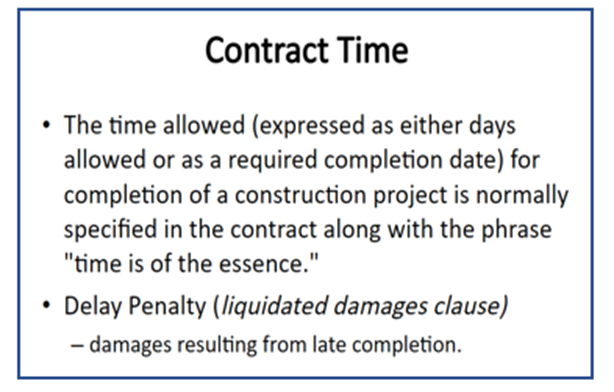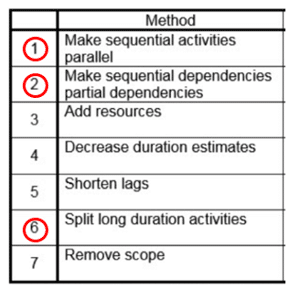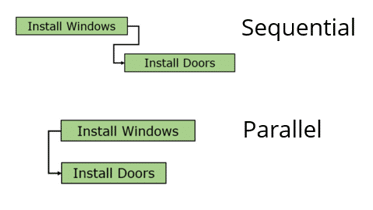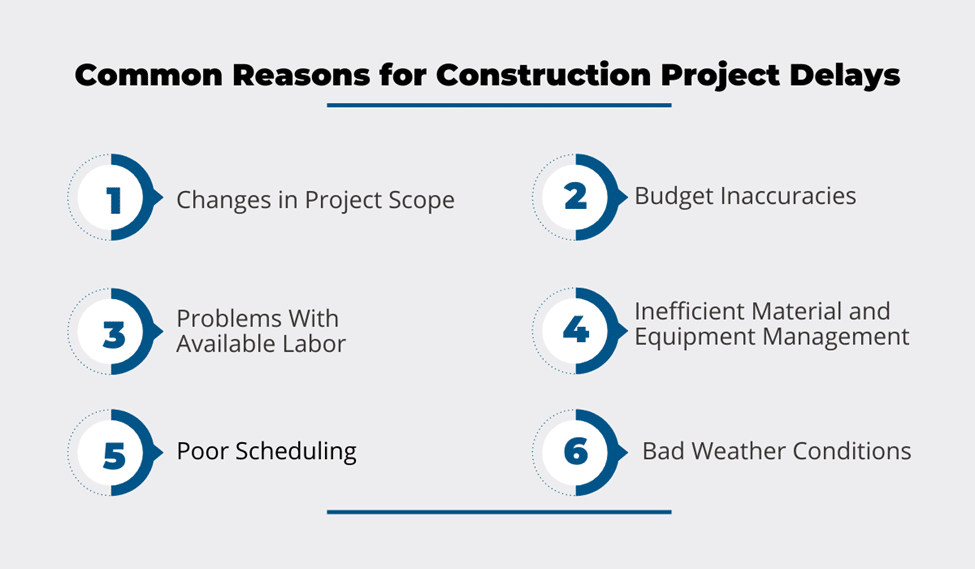Establishing an effective project schedule is probably the most critical factor for ensuring that a construction project is completed on time, within budget, and to the client’s satisfaction.
The benefits of project scheduling permeate all spheres of construction from start to finish.
Let’s take a closer look at how quality project scheduling improves construction project management.
In this article...
Project Scheduling Enables Better Decision Making
The process of creating a construction schedule allows construction company owners/project managers to make more informed decisions throughout the project and even before they submit a bid.
Thanks to project scheduling, a realistic project completion date can be established, thus enabling better decision-making.
In essence, a construction schedule lists all project deliverables, milestones, and activities required to complete a construction project.
However, scheduling is useful even before a construction company decides whether it will bid on a project.
Let’s say you’re preparing a bid for a construction project.
Although the project duration is usually defined in the request for proposal (RFP), you (as the contractor, or project manager) still need to ensure that the set project deadline is achievable, especially in view of other project specifications, constraints, and uncertainties.
To do so, you’ll need to formulate your own construction schedule for that project.
This can prevent you from taking on a project whose contract time is underestimated, which could lead to its late completion and possible delay penalties.

Simply put, once you’ve established your own project duration, you can compare it to the duration specified by the client and decide whether your company has the resources (including time) to do the job within the stipulated time frame.
If the answer is no, you can decide not to bid for the project or submit a bid with an alternative schedule based on your assessment.
Another benefit of preliminary scheduling in the bid preparation phase is that, if you decide to compete for the project, you can submit your baseline schedule together with your bid price.
This will show the project owner that you’ve analyzed the envisioned construction project and already have a plan on how to turn it into reality.

Naturally, this process will also allow you to make better-informed decisions regarding the scheduling of resources (labor, equipment, materials, etc.) required for completing the project, such as the number of work hours and availability of your staff and subcontractors.
In addition to creating a time-phased cost estimate that will drive your schedule, this will inform you about possible overlaps with your other projects, potential time constraints regarding subcontractors and suppliers, and other issues that may arise during construction.
These and other factors play a major role in enabling better decision-making before and during project execution.
All in all, project scheduling allows you to determine a realistic project completion date that considers the resources and the time you have available, allowing you to make a more informed decision on whether the project is worth your time.
Scheduling Keeps Better Track of Interdependent Tasks
Considering the complexity of construction projects, it’s clear that many scheduled tasks depend on the timely completion of other preceding tasks.
When taken in sequence, they create the total project duration known as the critical path.
Effective scheduling allows you to better track those interdependent tasks and find ways to shorten the critical path.
In a nutshell, all project activities subject to scheduling can be classified as critical or non-critical.
Those activities whose delay would move the final project delivery date are considered critical. Thus, it’s essential to ensure those activities are completed on time.
A good example of a critical activity is laying the foundations for a new home. If the foundations are not finished on schedule, this will delay all other activities, such as installing wall frames.

Non-critical activities are those that can be postponed (only for a particular period called the float, buffer, or slack) without affecting the project completion date.
For example, pouring the driveway of a new house can be delayed until the house is entirely built before jeopardizing the final completion date.
When all activities are defined, prioritized, sequenced, and their float (if any) determined, the resulting schedule allows you to track and manage interdependent tasks and set more realistic timeframes.
Moreover, the identified float of any task can be used to mitigate anticipated project risks or address unexpected setbacks during construction.
It also enables you to look for ways to shorten the critical path and thus finish the project ahead of schedule.
This can be done in several different ways. This table, courtesy of Ten Six Consulting, shows seven methods, and we highlighted the most popular ones:

The methods listed first refer to rearranging sequential activities into parallel ones.
For example, if the plan is to install the windows first, and then the doors because the initial schedule assumed that the same subcontractor would be doing both, you can save time if that’s actually not so (at no extra cost).
You can even hire another subcontractor to install the doors while the first one installs windows (at an extra cost).
Either way, making these successive activities run in parallel will shorten the project’s critical path and, consequently, its total duration.

However, when project managers attempt to fast-track the schedule, they should keep in mind the impact that can have on the scope, quality, and cost of the project.
They should also consider whether two parallel tasks can be performed simultaneously.
In conclusion, a proper schedule will enable better tracking of interdependent tasks and provide opportunities to shorten the critical path, enabling you to proactively manage the schedule, identify risks and inevitable changes.
Scheduling Helps With Better Cash Flow Management
Construction projects are often running on tight schedules and even tighter profit margins.
This makes cash flow management crucial for the survival of any construction business. Thus, project scheduling can and should be used to facilitate better cash flow management.
Even before the pandemic and other ongoing global crises, the construction industry was not known for its payment speed.
The 2021 construction payments report found that the average number of days to collect payment (days sales outstanding, DSO) in construction was 83 days in 2018, the longest among all industries.
Four years later, the importance of cash flow management is even more evident.
In fact, you can see the three biggest consequences of cash flow gaps for construction businesses surveyed in the aforementioned report:

These and other consequences, such as not paying salaries on time (17%) or suspending capital investments (11%), most often arise from the payment gap between the contractor’s income (i.e., payments received according to the agreed payment schedule) and expenses (overhead costs, payments to subcontractors and vendors, etc.).
This is only exacerbated by the fact that construction contracts typically have a retainage clause.
In other words, contractors don’t get the full payment due to them until project completion, and the amount withheld by the client (usually 10%) often represents their entire profit margin.
Consequently, many are forced to rely on their own capital, take out loans or retain factoring services to sustain their cash flow and keep their business afloat, as this company suggests.

Naturally, any delays in performing the scheduled activities can negatively affect cash flow even further.
However, sometimes even early task completion can produce the same result, as we’ll explain below.
All the above just emphasizes the importance of using scheduling as a tool for improving cash flow management.
For example, you should consider potential progress payments according to the percentage of completed works at each project milestone.
Maybe some activities can be scheduled to provide for a more even cash flow from one payment to the next.
As for early completions, the non-critical activities we mentioned in the previous section are more flexible and often have an early and late completion date.
This means that you can adjust their completion to postpone some project-related expenses when cash flow is scarce.
Thus, doing something ahead of schedule might not be the best thing in terms of cash flow.
Consequently, you should be striving to achieve the best possible balance between the “early” and “late” options.
So, scheduling can improve cash flow management, thus keeping the project going and avoiding delays and potential disputes.
Scheduling Helps Manage Project Changes
Regardless of how good initial scheduling is, changes in construction projects are to be expected.
However, having a thorough construction schedule that is both flexible and updatable will help you find ways to reduce delays triggered by project changes.
Reasons for project changes are so diverse that numerous studies provided different categorizations.
That said, the usual consequence of any project change is a delay in the construction schedule.
And, as the schedule is the thread that keeps any construction project together, it needs to be flexible enough to accommodate such changes and (at least partially) compensate for them.
It all depends on the nature, size, and complexity of a project change.
The top reasons for construction project delays show that changes in project scope are only one of the common reasons why the schedule needs to be accommodating.

We’ve already described some of the scheduling techniques used to shorten the project’s critical path, such as making sequential tasks parallel or splitting long-duration tasks.
These methods can also be used to make up for the time lost due to delays caused by project changes, thus keeping the project completion date in check.
They revolve around “crashing” the schedule, usually by agreeing with the client to allocate additional resources to critical path activities, reduce the project scope, or sacrifice certain design or quality requirements.
Naturally, the results of such schedule interventions will depend on good initial planning and efficient subsequent change order management.
In other words, they depend on sufficiently detailed initial scheduling and the ability to monitor and record all project changes in the schedule, both of which are best achieved by using various construction management software tools, such as this one.

This and other similar software can streamline all project scheduling processes and allow you to track, record, and manage all project changes.
It will also support all three benefits we listed until now—more informed decision-making, better tracking of interdependent tasks, and improved cash flow management.
Today, different software tools, coupled with other modern construction technologies like, for example, tracking of tools and equipment or using drones for site surveys and regular site inspections, allow for monitoring of all factors affecting the project schedule.
For instance, project changes can be managed more efficiently when you know where all your construction equipment, tools and materials are and what’s their status (e.g., last service date, the person who checked out equipment, last known location, material inventory levels, etc.).
To achieve this and more, you can try our asset tracking software, GoCodes.

In fact, a new study found that the number of construction companies using asset tracking solutions will grow by 27% until 2025.
To sum up, creating and maintaining a detailed construction schedule with sufficient flexibility to manage project changes is nowadays powered by software and other technologies.
Using software solutions, combined with schedule fast-tracking and crashing methods, will help you find an optimal strategy to reduce delays caused by project changes.
Conclusion
Having covered only four benefits of project scheduling in construction, it must be said there’s much more where that came from.
Thus, investing time and effort to create a robust, adaptive, and resilient construction project schedule will undoubtedly pay off in terms of completing the project on or ahead of schedule, within or under budget, and to the client’s and your satisfaction.





